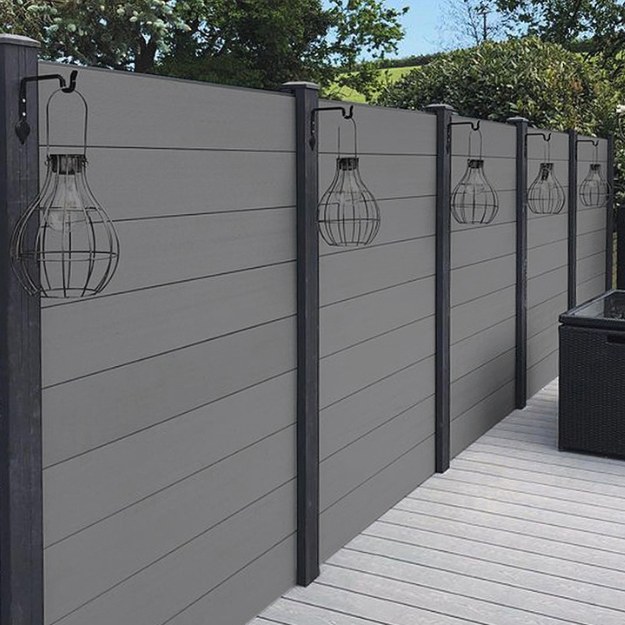
In today’s world, sustainability is more than just a trend—it’s a responsibility. As homeowners seek ways to reduce their environmental impact, many are exploring greener options for home improvement, including fencing. Whether you’re upgrading your current boundary or installing a brand-new custom fence, choosing eco-friendly materials can help protect the planet while enhancing your property’s appeal.
Let’s explore the most environmentally responsible materials for your next custom fence project and why they’re worth considering.
Why Choose Eco-Friendly Materials for Fencing?
A custom fence offers a great opportunity to align your home’s design with your environmental values. Traditional fences, especially those made from non-recyclable plastics or pressure-treated woods with harmful chemicals, can negatively affect the environment. By choosing eco-friendly materials, you reduce your carbon footprint, support sustainable industries, and avoid toxic substances.
Eco-conscious fences not only look stylish and perform well, but they also last long and often require less maintenance. These factors combined make them a smart investment for the future.
- Reclaimed Wood Fencing
Reclaimed wood is one of the most sustainable options for a custom fence. It involves reusing wood from old barns, factories, and buildings. By repurposing existing lumber, you’re minimizing the need for new logging, preserving forests, and giving materials a second life.
Pros:
- Natural appearance and unique character
- Reduced environmental impact
- Cost-effective if sourced locally
Cons:
- May require treatment to prevent rot or pests
- Inconsistent sizes and weathering
To ensure sustainability, always ask suppliers about the origin of the wood and any treatments it has undergone.
- Bamboo Fencing
Bamboo grows incredibly fast—up to 3 feet a day in optimal conditions—making it one of the most renewable resources on the planet. It’s strong, stylish, and perfect for those who want a more modern or Asian-inspired look for their custom fence.
Pros:
- Highly renewable
- Lightweight yet durable
- Aesthetic and exotic appearance
Cons:
- Susceptible to weather unless properly sealed
- Not ideal in areas with extreme cold
With proper maintenance, bamboo can last for years while maintaining its elegance and functionality.
- Recycled Composite Fencing
Composite fencing combines recycled plastic with wood fibers, creating a durable, low-maintenance material ideal for custom fence applications. It mimics the appearance of wood while offering resistance to rot, insects, and fading.
Pros:
- Made from recycled materials
- Long-lasting and low-maintenance
- Available in various colors and styles
Cons:
- Higher upfront cost
- May not offer the exact look of natural wood
For homeowners looking for a green product that’s tough and attractive, recycled composite fencing is a fantastic choice.
- Metal Fencing Made from Recycled Steel or Aluminum
Metal fences are known for their strength and security. When made from recycled steel or aluminum, they become a surprisingly sustainable option. These materials can be recycled repeatedly without losing strength or quality.
Pros:
- Extremely durable and long-lasting
- Can be recycled again at end of life
- Modern or traditional styles available
Cons:
- Can be costly
- Requires powder coating to prevent rust
If you’re prioritizing security and sustainability, metal is a strong candidate for your custom fence.
- Living Fences (Hedges or Shrubs)
A truly green option, living fences consist of hedges, shrubs, or small trees planted to act as a barrier. They absorb carbon dioxide, provide habitat for wildlife, and add beauty to your landscape.
Pros:
- 100% natural and renewable
- Improve air quality and biodiversity
- Offer excellent sound and wind barriers
Cons:
- Takes time to grow
- Requires regular trimming and maintenance
For a custom fence that grows with you and your landscape, consider incorporating living elements.
Tips for Building a Sustainable Custom Fence
- Source Locally: Reduce transportation emissions by choosing locally sourced materials.
- Use Non-Toxic Sealants: If your fence needs treatment, opt for environmentally safe products.
- Think Long-Term: Investing in durable, quality materials means less waste and maintenance down the line.
- Reuse When Possible: Salvage old posts or panels when updating your fence.
Conclusion
Creating a custom fence doesn’t mean you have to sacrifice sustainability. With a wide range of eco-friendly materials available—from reclaimed wood to bamboo and recycled composites—there are plenty of stylish and responsible choices to suit your needs. By taking the time to plan your fencing project with the environment in mind, you can add value to your home and peace of mind knowing you’ve made a greener choice.
